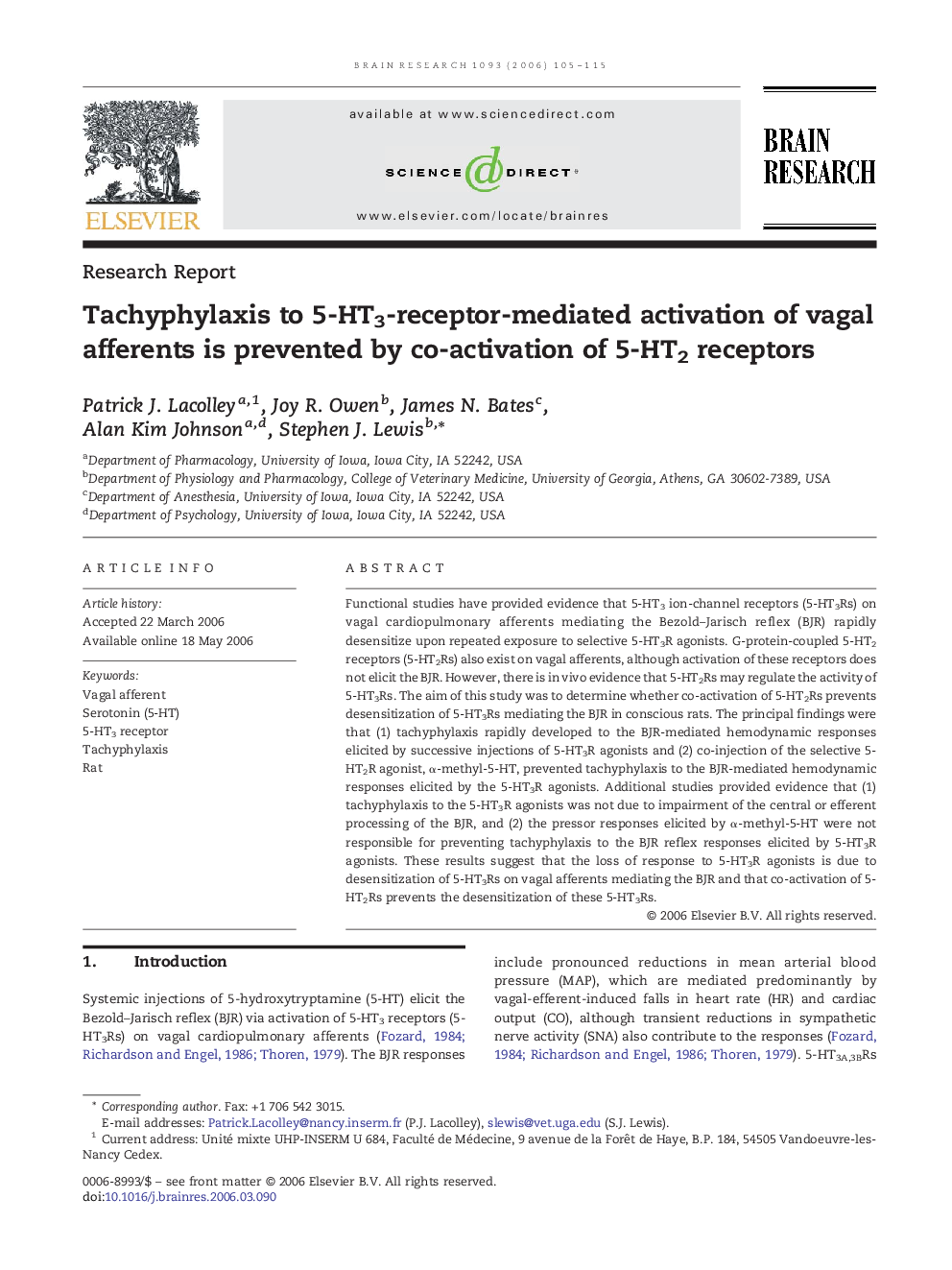| Article ID | Journal | Published Year | Pages | File Type |
|---|---|---|---|---|
| 4332801 | Brain Research | 2006 | 11 Pages |
Functional studies have provided evidence that 5-HT3 ion-channel receptors (5-HT3Rs) on vagal cardiopulmonary afferents mediating the Bezold–Jarisch reflex (BJR) rapidly desensitize upon repeated exposure to selective 5-HT3R agonists. G-protein-coupled 5-HT2 receptors (5-HT2Rs) also exist on vagal afferents, although activation of these receptors does not elicit the BJR. However, there is in vivo evidence that 5-HT2Rs may regulate the activity of 5-HT3Rs. The aim of this study was to determine whether co-activation of 5-HT2Rs prevents desensitization of 5-HT3Rs mediating the BJR in conscious rats. The principal findings were that (1) tachyphylaxis rapidly developed to the BJR-mediated hemodynamic responses elicited by successive injections of 5-HT3R agonists and (2) co-injection of the selective 5-HT2R agonist, α-methyl-5-HT, prevented tachyphylaxis to the BJR-mediated hemodynamic responses elicited by the 5-HT3R agonists. Additional studies provided evidence that (1) tachyphylaxis to the 5-HT3R agonists was not due to impairment of the central or efferent processing of the BJR, and (2) the pressor responses elicited by α-methyl-5-HT were not responsible for preventing tachyphylaxis to the BJR reflex responses elicited by 5-HT3R agonists. These results suggest that the loss of response to 5-HT3R agonists is due to desensitization of 5-HT3Rs on vagal afferents mediating the BJR and that co-activation of 5-HT2Rs prevents the desensitization of these 5-HT3Rs.
